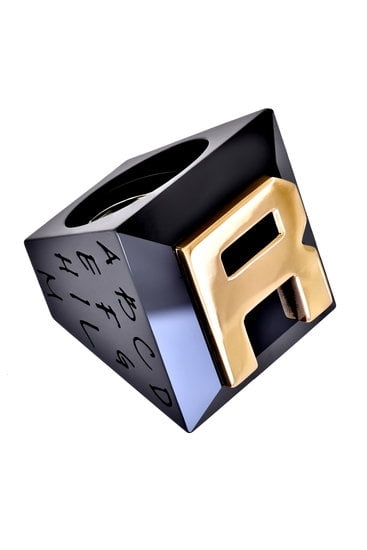Platinum and gold are two of the most popular metals used in jewelry, each with its unique characteristics and allure. As consumers, it is crucial to understand the basics of platinum and gold jewelry, especially when it comes to their respective prices. This article aims to break down the key differences between platinum and gold jewelry while highlighting the significance of precious metals in the jewelry industry.
When it comes to platinum and gold jewelry, one of the primary factors that differentiate them lies in their composition. Gold, a yellow metal prized for its beauty and rarity, has been revered for centuries. On the other hand, platinum, a lustrous white metal known for its durability and prestige, is gaining popularity among jewelry enthusiasts.
Understanding the intrinsic value and scarcity of these metals is essential in unraveling their price factors. Additionally, market demand and fluctuations play a significant role in determining the price of both platinum and gold jewelry. By exploring these factors further, we can gain insight into how they impact the pricing dynamics in the jewelry market.
Unraveling the Price Factors
Platinum and gold are two precious metals commonly used in jewelry making. While both metals have their own unique qualities and beauty, they also come with different price tags. In this section, we will delve into the factors that determine the price of platinum and gold jewelry, helping consumers understand why these metals vary in cost.
One significant factor that influences the price of platinum and gold jewelry is their intrinsic value and scarcity. Platinum is rarer than gold, making it a more valuable metal. In fact, platinum is nearly 30 times more rare than gold, which contributes to its higher price point. The rarity of platinum makes it an exclusive choice for luxury jewelry pieces.
Market demand and fluctuations also play a role in determining the price of platinum and gold jewelry. When demand for either metal increases, prices tend to rise as well. Additionally, market trends and economic factors can impact the prices of these metals. For instance, during times of economic uncertainty or instability, investors often turn to precious metals like gold as a safe haven investment, leading to an increase in its price.
| Factors | Platinum Jewelry | Gold Jewelry |
|---|---|---|
| Intrinsic Value | Higher due to rarity | Slightly lower due to availability |
| Market Demand | Influences pricing significantly | Influences pricing significantly |
As seen in the table above, while both metals are affected by market demand and fluctuations, platinum’s higher intrinsic value leads to generally higher prices compared to gold jewelry. Understanding these factors can help consumers make informed decisions when purchasing platinum or gold jewelry based on their individual preferences and budget.
By unraveling the price factors that determine the cost of platinum and gold jewelry, consumers gain valuable insights into why these metals vary in price. Whether it’s the rarity and intrinsic value of platinum, or the market demand and economic factors affecting gold, these aspects influence the price tags attached to these precious metals. Ultimately, individuals can use this knowledge to make well-informed choices when buying jewelry that aligns with their tastes and financial means.
Comparative Analysis
Platinum and gold are two of the most popular choices for jewelry, but they have distinct differences in terms of price. In this section, we will conduct a comparative analysis of platinum jewelry price versus gold jewelry price, exploring the factors that contribute to their pricing and examining historical trends that have influenced the jewelry market.
To understand the pricing differences between platinum and gold jewelry, it is essential to examine their respective prices per ounce or gram. Currently, platinum is generally priced higher than gold. This is mainly due to its rarity and higher level of purity compared to gold.
Platinum is denser and heavier than gold, which contributes to its higher price tag. Furthermore, platinum is often mixed with other metals such as palladium or ruthenium to enhance its durability and strength, increasing its overall cost.
Another factor that affects the price of both platinum and gold jewelry is market demand and fluctuations. The value of precious metals can be heavily influenced by economic conditions and investor sentiment.
For example, during times of economic uncertainty and instability, investors tend to flock towards traditional safe-haven assets like gold, driving up its demand and consequently its price. On the other hand, platinum’s value is influenced by factors such as industrial demand for applications like catalytic converters in automobiles.
Examining historical price trends allows us to gain insights into how they have influenced the jewelry market. Over the past few decades, both platinum and gold prices have experienced significant fluctuations. However, historically speaking, gold has been considered a more stable investment compared to platinum due to its long-standing reputation as a safe-haven asset.
Examining Jewelry Styles
When it comes to jewelry, design plays a crucial role in determining its price. The intricacy and complexity of a design can significantly impact the overall cost of both platinum and gold jewelry.
Intricate designs often involve skilled craftsmanship and attention to detail, which increases the labor and time required to create the piece. As a result, jewelry with elaborate designs tends to be more expensive, regardless of whether it is made from platinum or gold. These intricate designs may include filigree work, engraving, or complex settings for gemstones.
On the other hand, minimalist designs with clean lines and simplistic aesthetics can also affect the price of platinum and gold jewelry. While these designs may require less labor, they are often associated with contemporary or modern styles that appeal to a specific target audience. This exclusivity can also contribute to higher prices for minimalist jewelry.
Another factor that determines the price of platinum and gold jewelry is the use of gemstone embellishments. Diamonds, rubies, emeralds, and other precious stones are often used as accents or focal points in jewelry pieces. The size, quality, and rarity of these gemstones can greatly impact the overall cost of the piece.
For example, a simple solitaire diamond ring made from either platinum or gold will have a higher price tag compared to a plain wedding band without any gemstone embellishments. Similarly, a necklace adorned with rare colored gemstones will generally be more expensive than one without any additional adornments.
Overall, when considering the price of platinum versus gold jewelry, it is important to take into account not only the metal itself but also the design elements incorporated into each piece. Whether you prefer intricate designs that showcase fine craftsmanship or minimalist styles that exude timeless elegance, understanding how different designs affect pricing can help you make an informed decision when selecting your next piece of precious metal jewelry.
Evaluating Durability and Longevity
When considering a purchase of fine jewelry, it is important to evaluate the durability and longevity of the metal. Both platinum and gold are popular choices for jewelry, but they have different characteristics that can affect their worth as an investment.
Platinum, known for its strength and durability, is a highly resilient metal. It has a high melting point and does not easily tarnish or corrode over time. This makes platinum jewelry ideal for everyday wear, with minimal maintenance required to keep it looking its best. In addition, platinum is hypoallergenic, making it suitable for those with sensitive skin.
Gold, on the other hand, is softer than platinum and may require more maintenance to keep its shine. While pure gold is less likely to tarnish, it can scratch easily due to its malleable nature. This makes it important to handle gold jewelry with care and consider removing it during activities that may cause scratching or damage.
When considering the longevity of platinum versus gold jewelry, both metals have pros and cons. Platinum is harder and more durable than gold, meaning it is less prone to wear and tear over time. However, if a piece of platinum jewelry does become scratched or damaged, repairs can be more difficult as the metal is harder to work with compared to gold.
While gold may be more susceptible to scratches and wear, it holds its value well due to its timeless appeal. With proper care and occasional maintenance such as polishing or replating for white gold pieces, gold jewelry can last generations without losing its luster.
The Market Perspective
In the world of luxury jewelry, perception and prestige play a significant role in determining the value and price of both platinum and gold pieces. Cultural and societal attitudes towards these metals differ greatly, impacting consumer preferences and their willingness to invest in either platinum or gold jewelry.
Exploring cultural and societal attitudes towards platinum and gold
Platinum has often been associated with exclusivity, elegance, and high status. Its rarity and association with royalty have lent it a certain allure, making it highly sought after by individuals looking for a mark of prestige. The preference for platinum can be seen in many cultures around the world, where it is often used in engagement rings and other sophisticated jewelry pieces.
On the other hand, gold has deep-rooted cultural significance in various civilizations throughout history. It holds symbolic value in many religious practices, making it an important metal for ceremonial jewelry. Similarly, gold’s bright yellow hue has long been associated with wealth, prosperity, and power. This perception continues to influence consumer preferences today, with many individuals opting for gold jewelry as a timeless symbol of status and sophistication.
How reputation influences price and consumer preference
Beyond cultural associations, the reputation of each metal within the jewelry industry also affects its pricing. Platinum’s scarcity contributes to its higher price tag compared to gold. As consumers are willing to pay a premium for its exclusivity, this drives up the cost of platinum jewelry. Additionally, platinum’s hypoallergenic properties make it an attractive option for those with sensitive skin or allergies.
Gold’s comparative abundance can lead to more affordable prices compared to platinum. However, high-quality gold jewelry made from 18k or 24k gold still retains its value due to its purity. Gold is also known for being easily malleable, allowing artisans to create intricate designs that are highly valued in the market.
When considering whether to invest in platinum or gold jewelry, it is crucial to take into account the market perspective. Platinum’s prestige and limited availability come with a higher price tag, appealing to those seeking exclusivity and sophistication.
On the other hand, gold’s cultural and symbolic significance, coupled with its more accessible pricing, make it a popular choice for individuals looking for timeless jewelry that represents wealth and status. Ultimately, personal preferences, cultural influences, and individual budgets will all factor into the decision-making process when choosing between platinum and gold jewelry.
Eco-Friendliness
Platinum and gold are both popular metals used in jewelry, but they have different environmental impacts. Understanding the eco-friendliness of these metals can help consumers make more conscious choices when purchasing jewelry.
When it comes to the mining process, both platinum and gold extraction have significant environmental consequences. Gold mining involves large-scale excavation and uses toxic chemicals like cyanide, which can lead to soil erosion, water pollution, and habitat destruction. It is also known for contributing to deforestation and carbon emissions.
On the other hand, platinum mining is less destructive because it is usually found alongside other metals like nickel and copper. This means that the extraction process is more efficient as multiple metals can be extracted from a single mine.
In terms of sustainable alternatives, recycled platinum and gold offer a more environmentally friendly option compared to newly mined metals. Recycling reduces the demand for new mining activities, conserves natural resources, and minimizes waste. Moreover, recycled precious metals typically have the same quality as newly mined ones.
Personal Style and Preference
When it comes to choosing between platinum and gold jewelry, personal style and preference play a significant role in the decision-making process. Different individuals have varied tastes, which can be influenced by factors such as skin tone, personal style, and fashion trends.
Skin Tone
One important consideration when selecting between platinum and gold jewelry is skin tone. Both metals can complement different skin tones in unique ways. For individuals with cool undertones, platinum jewelry tends to be more flattering as it enhances the natural coolness of their complexion. On the other hand, individuals with warm undertones may find that gold jewelry complements their skin tone better.
Personal Style
Personal style is another crucial factor when deciding between platinum and gold jewelry. Platinum has a sleek and modern appeal, making it an excellent choice for those with contemporary or minimalist tastes. On the other hand, gold exudes a timeless elegance and warmth that appeals to individuals who prefer classic or vintage styles. Understanding one’s personal style and the overall look they want to achieve can help narrow down the metal option that best suits their preferences.
Fashion Trends
Fashion trends also influence individual choices when it comes to platinum or gold jewelry. While both metals are timeless classics, certain periods may see one metal trend more than the other due to fashion influences or celebrity endorsements. Staying up-to-date with current trends can help individuals align their choices with what is currently popular and fashionable.
Ultimately, choosing between platinum and gold jewelry should be a reflection of individual taste and style preferences. Considerations such as skin tone, personal style, and fashion trends can guide individuals towards making a choice that resonates with their desired look and aesthetic vision.
Final Verdict
In conclusion, when it comes to deciding between platinum and gold jewelry based on price, there is no clear winner. Both metals have their own unique attributes and appeal that determine their respective prices in the market. Platinum is known for its rarity, durability, and tarnish resistance, making it a popular choice for those seeking a long-lasting piece of jewelry.
However, this also makes platinum more expensive than gold. Gold jewelry, on the other hand, offers a timeless elegance and versatility that appeals to a wide range of consumers at a more affordable price point.
The price of platinum and gold jewelry is influenced by various factors such as market demand and fluctuations, intricate designs or gemstone embellishments, cultural and societal attitudes towards each metal, and even personal preference. Additionally, considering sustainability has become an important factor in purchasing decisions nowadays. Platinum mining generally has a lower environmental impact compared to gold mining; however, sustainable alternatives are emerging in the industry that can offer both ethical sourcing and eco-friendliness.
Ultimately, the decision between platinum or gold jewelry should be based on individual tastes, preferences, budget constraints, desired longevity of the piece, as well as consideration for the environment. It is important for consumers to make informed choices based on these factors to ensure satisfaction with their purchase.
Whether one chooses platinum or gold jewelry will depend on their own style preferences and the significance they place on attributes such as rarity, durability, affordability or environmental impact. At the end of the day, both metals hold their own charm and beauty, making them timeless options for any discerning jewelry lover.

Welcome to my jewelry blog! My name is Sarah and I am the owner of this blog.
I love making jewelry and sharing my creations with others.
So whether you’re someone who loves wearing jewelry yourself or simply enjoys learning about it, be sure to check out my blog for insightful posts on everything related to this exciting topic!





